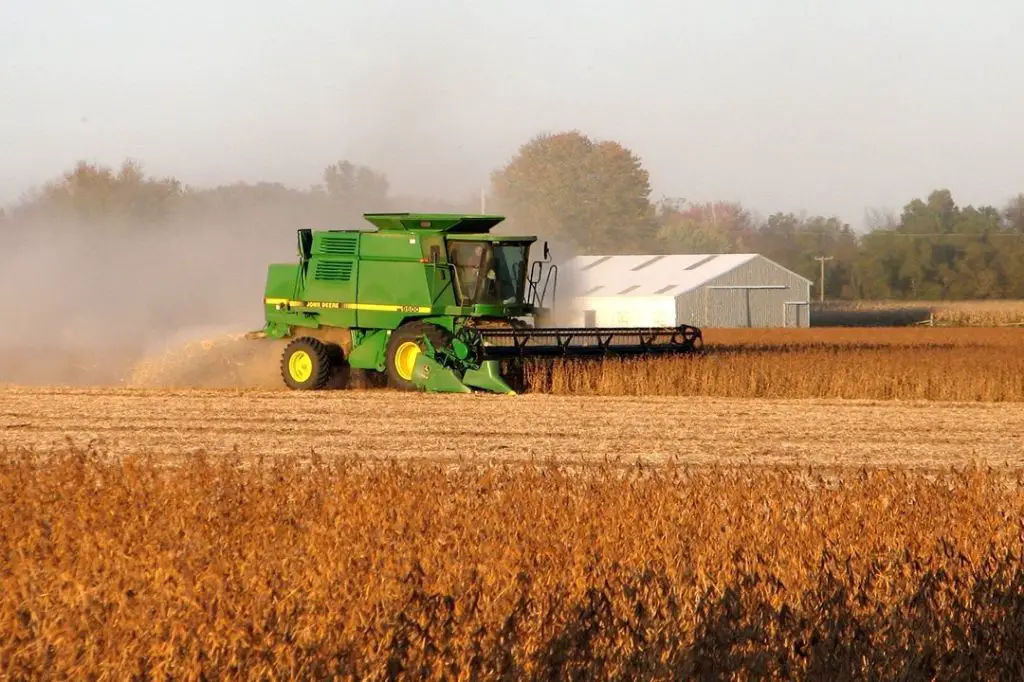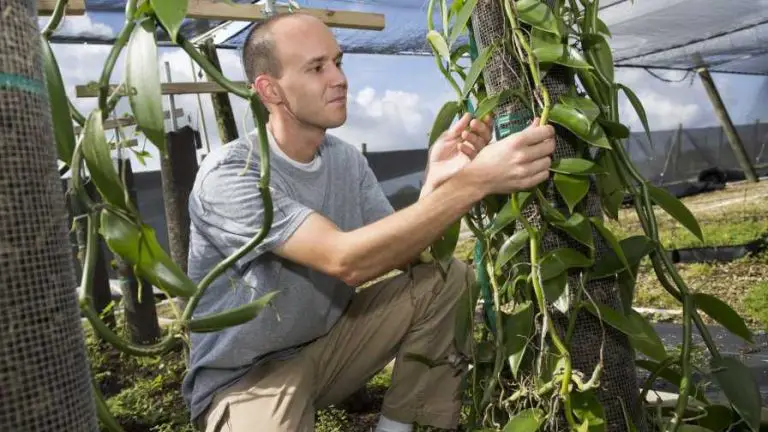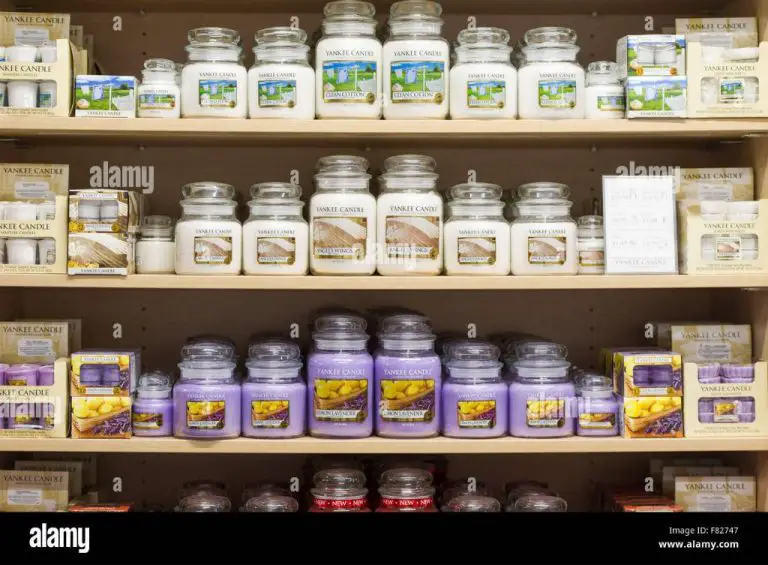How Is Soy Wax Made?
Soy wax is a vegetable-based wax made from soybeans. It is an alternative to paraffin wax and other petroleum-based waxes used for candle making, skin care, art, and industrial applications. Soy wax was developed in the early 1990s as a more environmentally friendly, renewable resource that had many advantages over petroleum waxes.
The development of soy wax is credited to Michael Richards, who was looking for a natural wax alternative that was affordable and worked well for candle making. At the time, most candles were made from paraffin wax, which is a byproduct of petroleum refining. Beeswax was a nice natural option, but was very expensive. In 1991, Richards created the first soy wax candle under the name Candleworks (https://www.soya.be/soy-wax-history.php). His soy wax blend became popular among artisan candle makers and larger companies. Today, soy wax is commonly used by candle makers and consumers looking for an eco-friendly, clean-burning candle wax.
To make soy wax, soybeans are first cleaned, cracked, dehulled, and flattened into flakes. The soy flakes then undergo solvent extraction, using hexane solvent, to separate the soybean oil from the flakes. After extraction, the soy oil goes through a hydrogenation process which converts it into a solid wax. Extra additives can be mixed in to achieve desired properties. The wax is then tested, filtered, blended, and packaged for use in candle making, cosmetics, art mediums, and industrial applications.
Growing Soybeans
Soybeans are warm-season legumes that thrive in hot and humid climates. The Midwestern United States is one of the best regions for growing soy due to its unique combination of rainfall, sunshine and long summer days. Soybean varieties developed for wax production prefer moderate rainfall (20-35 inches annually), well-drained loamy soils and daytime summer temperatures around 86°F.
The major soybean producing states for wax extraction are Illinois, Iowa, Indiana and Ohio. Common varieties grown for wax include the Amsoy, Corsoy, Vinton and Mack.
Soybeans are planted in late spring or early summer once soils have warmed to at least 50°F. They are grown in rows 15-30 inches apart at a rate of around 80 pounds of seed per acre. Soybean plants grow rapidly in the summer heat and begin flowering by late June or July. The bean pods reach maturity and dry out in the early fall, when they are ready for harvesting.
Sources:
[1] https://www.felinfach.com/pages/soy-wax-candles
Harvesting Soybeans
The timing of the soybean harvest is critical. Soybeans are typically ready to harvest when the pods turn brown and the seeds inside rattle when shaken. This usually occurs around September to November. Farmers closely monitor the moisture content of the beans, which needs to fall below 13% before harvesting.
There are two main methods for harvesting soybeans:
1. Combine Harvesters: These specialized machines cut the stocks and separate the beans from the pods all in one motion. This is the most common and efficient method. Combines utilize a cutterbar to cut the plant 10-15cm above the ground and feeds them into threshing cylinders that knock the beans loose.
2. Manual Harvesting: In some developing regions without access to combines, soybeans are harvested manually using hand tools like machetes. While very labor intensive, this allows beans to be selectively picked at peak freshness. The plants are cut down, bundled, and then threshed by beating the bundles to knock loose the beans.
After harvesting, soybeans are dried to around 10% moisture content to prevent spoilage during storage. Beans are dried either naturally by leaving bundles in the sun or through heated air dryeration systems. Once dried, the soybeans are cleaned, sorted, and stored in silos until they can be transported for processing into soybean oil and soy wax.
Sources:

https://www.ehow.com/how_4423083_make-soy-wax-from-soybeans.html
https://www.candlescience.com/learning/what-is-soy-wax/
Extracting Soybean Oil
Soybeans are first cleaned to remove any debris or impurities before extracting the oil. This involves removing sticks, stems, leaves, dirt, stones, and metal pieces. The soybeans are passed through cleaning equipment like screens, shakers, magnets, and aspiration channels that blow away lightweight impurities.
The cleaned soybeans undergo crushing to extract crude soybean oil. There are two main crushing methods:1
- Solvent extraction uses hexane solvent to extract the oil.
- Mechanical pressing crushes the beans to force out the oil.
The crude soybean oil contains impurities and needs to be refined. Refining involves removing phospholipids, free fatty acids, pigments, and off-flavors. The oil goes through degumming, neutralization, bleaching, and deodorizing processes to refine it.
Hydrogenation Process
The key to creating soy wax is through a chemical process called hydrogenation. This involves adding hydrogen to the soybean oil, which converts the unsaturated fat into a saturated fat and gives it a higher melting point to create a wax-like texture and consistency (Soy wax production).
There are a few methods used for hydrogenating soybean oil:
- Partial hydrogenation – Adding just enough hydrogen to achieve the desired melting point and properties
- Full hydrogenation – Fully saturating the fatty acids which produces a harder wax
- Fractionation – Separating the hydrogenated oil into fractions with different melting points
The level of hydrogenation and method used impacts the final characteristics of the soy wax such as the melting point, hardness, and oil content. Formulators aim to create a pliable, smooth wax that melts at the desired temperature for the specific end use whether that is for candles, cosmetics, or other purposes (Tom’s of Maine).
Additives can also be blended with the hydrogenated soybean oil to achieve certain properties. Common additives include paraffin for hardness, vybar for flexibility, and fragrances.
Additives
Common additives used in soy wax include fragrance oils and dyes (Source). Fragrance oils are added to give the soy wax and resulting candles appealing scents. Popular fragrance oils used include floral, fruity, and bakery scents. Dyes are used to color the soy wax, allowing for colorful and visually appealing candles.
Additives serve important purposes in soy wax. Fragrance oils and dyes allow manufacturers to customize soy wax for different looks, feels, and purposes. For example, scented candles can create certain ambiences and color varieties allow for festive or themed candles. Other additives like vybar and stearic acid help modify the melting point, texture, and performance of the soy wax (Source). Overall, additives allow soy wax to be tailored to meet functional and aesthetic needs.
Testing and Quality Control
Quality control is a critical part of soy wax candle manufacturing to ensure consistency and safety. Some important quality metrics to test include:
Fragrance Strength and Scent Throw – The ideal soy wax candle should have an appealing, consistent scent when burning, without being overpowering. Testing fragrance strength involves expert smell testing and scent meters. The target is usually 6-8% fragrance oil by volume.1
Appearance – The candle should look visually appealing and have an even color distribution without imperfections. Visual inspections under proper lighting can catch aesthetic defects.
Burn Performance – Testing the burn involves lighting the candle and allowing it to burn for a period to assess factors like wax pooling, retention, mushrooming or sooting. The flame should be steady and wax fully liquefied.2
Drip Test – The melted wax should not drip down the sides of the container when the candle burns. Testing involves burning the candle and observing drippage.
Glass Adhesion – For containers, a test is done to ensure proper adhesion of wax to the glass to prevent separation or slippage.
Consistency across batches is critical. Thorough testing procedures and quality control standards should be established and followed rigorously for each batch of candles to ensure the end product is safe and delivers the expected experience to the consumer.
Packaging
Soy wax manufacturers offer different bulk packaging options for industrial buyers. Soy wax is commonly packaged in boxes, drums, or totes for bulk transport and storage. Boxes typically hold 20-40 lbs of wax, while drums and totes can hold 400 lbs or more. Bulk soy wax is usually packaged without additives so manufacturers can customize the wax blend.
For consumer products like candles, soy wax is packaged in smaller quantities. Many candle making suppliers sell soy wax in 1 lb and 10 lb blocks. The wax is pre-formulated with additives like fragrance and dye. Popular packaging options for retail soy candles include tins, glass jars, and corrugated boxes. Clear containers allow customers to see the soy wax inside.
Soy candle producers must follow labeling rules for candle products. Labels should identify all candle ingredients for safety and disclose item dimensions, volume, and weight. Warning labels about keeping candles away from flammable items are also required. Some sellers use soy wax packaging to highlight the natural wax ingredients.
Sources:
https://www.etsy.com/market/soy_wax_packaging?ref=seller_tag_bottom_text-6
https://www.icustomboxes.com/soy-wax-candle-packaging/
Uses of Soy Wax
The main use of soy wax is in candle making. Soy wax is often preferred over paraffin wax for candle making because it is a natural, renewable resource that is biodegradable and environmentally friendly. Soy wax candles burn longer and cleaner than paraffin candles. The wax is also blended with essential oils to create fragrant candles. Soy wax makes strong scented candles because it holds fragrances very well. Common ingredients used in soy candle making include soy wax flakes, fragrance oils, dye blocks, and wicks (https://www.alibaba.com/showroom/soy-wax-uses.html).
Another major use of soy wax is in skin care products like lotions, creams, balms, and soaps. The wax helps retain moisture in the skin when used in lotions. It also adds texture and thickness to balms. Soy wax is gentle on sensitive skin because it doesn’t clog pores. It is a common ingredient in natural and organic skin care products (https://www.terre-de-bougies.com/en/content/94-soy-wax-guide).
Soy wax is also used for art casting such as jewelry making, decorative items, and sculpture. The low melting point allows artisans to achieve fine detail in their castings. Soy wax can be colored easily with liquid dye or crayon shavings. The finished casts can be painted or decorated as desired (https://www.glchems.com/news_details/1699951854233980928.html).
Conclusion
The production of soy wax entails several steps, starting with growing and harvesting soybeans, then extracting the soybean oil through crushing, pressing, and solvent extraction. The soybean oil undergoes hydrogenation to convert it into a solid wax, and then additives are incorporated to modify the melting point, scent throw, and color. Testing and quality control occur throughout the process before the final soy wax products are packaged for use.
Soy wax has many benefits that make it a popular choice for candle making and other applications. It is a renewable, natural wax made from soybeans, so it is biodegradable and eco-friendly. Soy wax burns cleanly and emits very little soot or smoke. It also holds fragrances well without imparting its own scent, making it ideal for candles. Additionally, soy wax is hardness adaptable based on the level of hydrogenation, and it melts at a lower temperature than paraffin wax, reducing issues with frosting.
Looking ahead, innovation in soy wax blends and additives will likely continue, driven by the demand for natural, sustainable products. Research into maximizing soy wax’s fragrance throw and burn qualities is ongoing. With increased focus on environmental awareness, soy wax should continue growing in popularity and usage compared to petroleum-based waxes.






